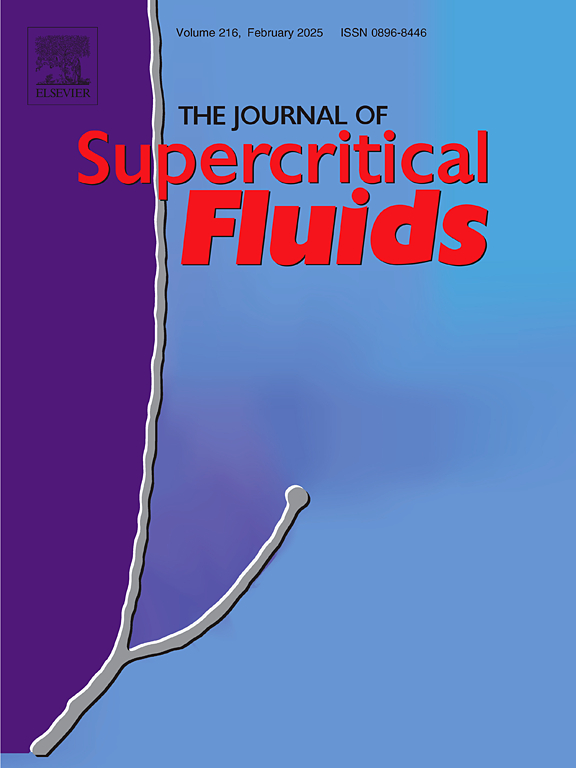用Buckingham π定理分析超临界反溶剂过程中纯固体的平均粒径
IF 3.4
3区 工程技术
Q2 CHEMISTRY, PHYSICAL
引用次数: 0
摘要
在超临界反溶剂过程中,提出了两个关系式来估计析出的纯固体化合物的平均粒径。这些易于使用的关联关系,每个都有六个可调系数,通过应用基于白金汉π定理的量纲分析,将颗粒大小与进料,热力学和机械过程参数联系起来。这些相关性可以帮助扩大微粒生产过程;然而,它们不能从概念上解释工艺参数对粒径的影响,并且仍然受到实验可用数据的限制。通过采用溶质过饱和数据或CO2+溶剂体系的摩尔体积来区分这两种相关性。通过测试17个三元体系来评估这些相关性,与实验值的偏差≤ 88 %。他们证明了能够把同一种溶剂组成的所有溶质联系起来。中试规模的数据是用实验室规模数据调整的系数来估计的。最后,相关关系成功地再现了颗粒大小作为温度和压力的函数。本文章由计算机程序翻译,如有差异,请以英文原文为准。
Correlating mean particle size of pure solids in supercritical antisolvent processes using dimensional analysis with the Buckingham π-theorem
In supercritical antisolvent processes, two correlations have been proposed to estimate the mean particle size of precipitated pure solid compounds. These easy-to-use correlations, each with six adjustable coefficients were developed by applying dimensional analysis based on the Buckingham π-theorem, relating the particle size to feeding, thermodynamic, and mechanical process parameters. These correlations can help in scaling-up microparticle production processes; however, they do not conceptually explain the influence of process parameters on particle sizes, and remain limited by the experimental available data. The two correlations are differentiated by employing either solute supersaturation data or molar volumes of CO2+solvent systems. These correlations were evaluated by testing seventeen ternary systems, with deviations from experimental values ≤ 88 %. They proved capable of correlating all solutes grouped by the same solvent. Pilot-scale data were estimated using coefficients adjusted with laboratory-scale data. Finally, the correlations successfully reproduced the particle size as a function of temperature and pressure.
求助全文
通过发布文献求助,成功后即可免费获取论文全文。
去求助
来源期刊

Journal of Supercritical Fluids
工程技术-工程:化工
CiteScore
7.60
自引率
10.30%
发文量
236
审稿时长
56 days
期刊介绍:
The Journal of Supercritical Fluids is an international journal devoted to the fundamental and applied aspects of supercritical fluids and processes. Its aim is to provide a focused platform for academic and industrial researchers to report their findings and to have ready access to the advances in this rapidly growing field. Its coverage is multidisciplinary and includes both basic and applied topics.
Thermodynamics and phase equilibria, reaction kinetics and rate processes, thermal and transport properties, and all topics related to processing such as separations (extraction, fractionation, purification, chromatography) nucleation and impregnation are within the scope. Accounts of specific engineering applications such as those encountered in food, fuel, natural products, minerals, pharmaceuticals and polymer industries are included. Topics related to high pressure equipment design, analytical techniques, sensors, and process control methodologies are also within the scope of the journal.
 求助内容:
求助内容: 应助结果提醒方式:
应助结果提醒方式:


